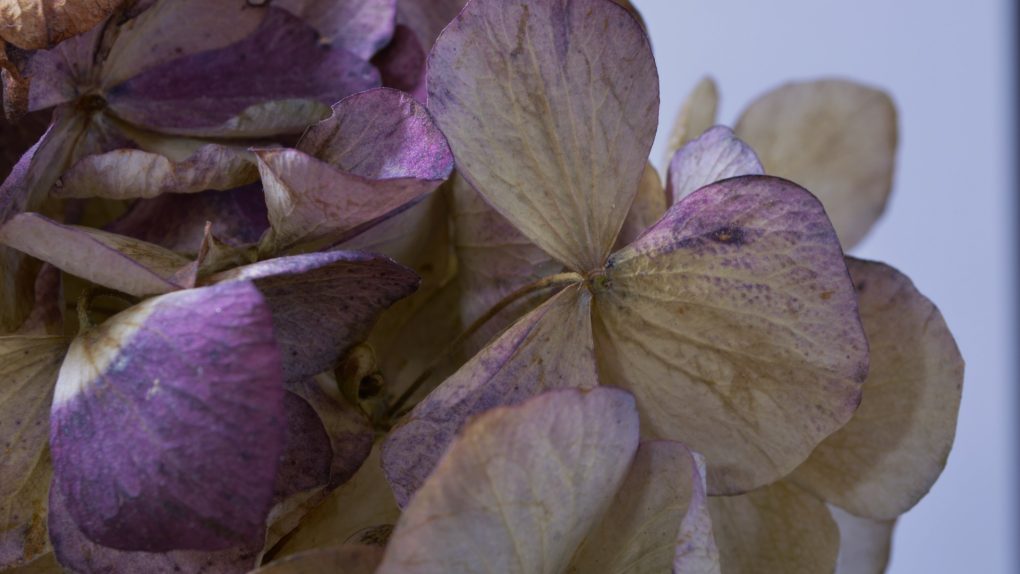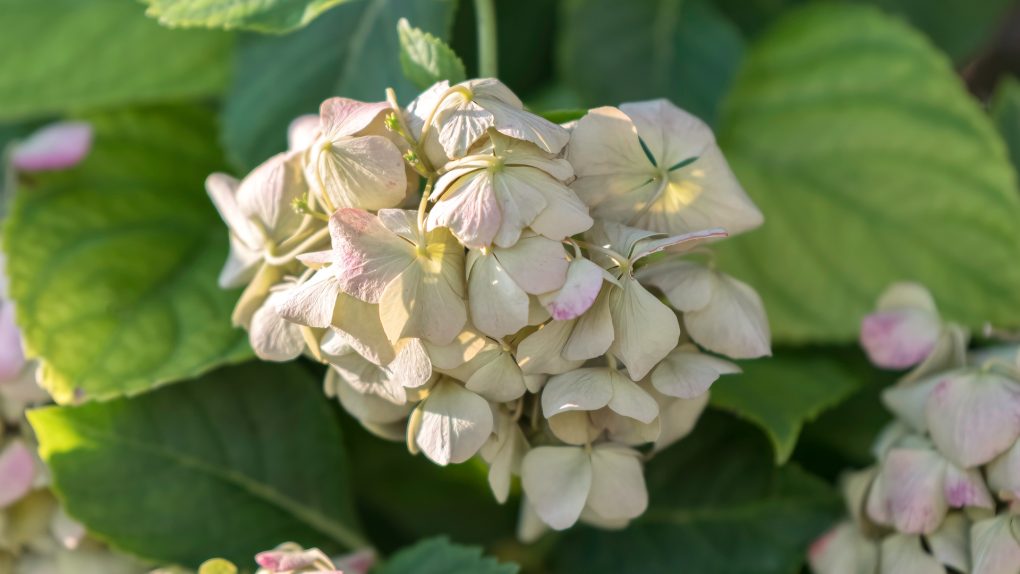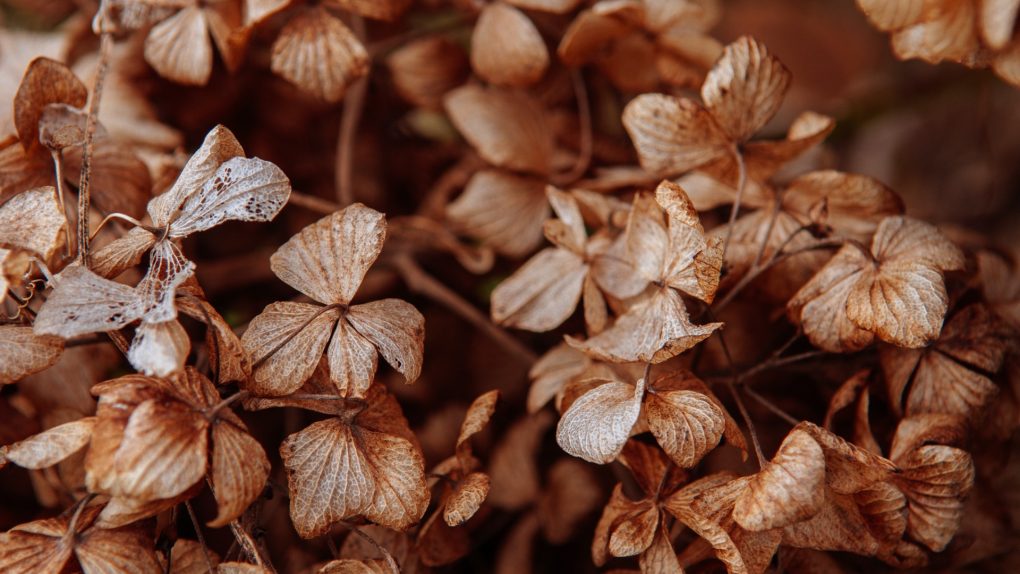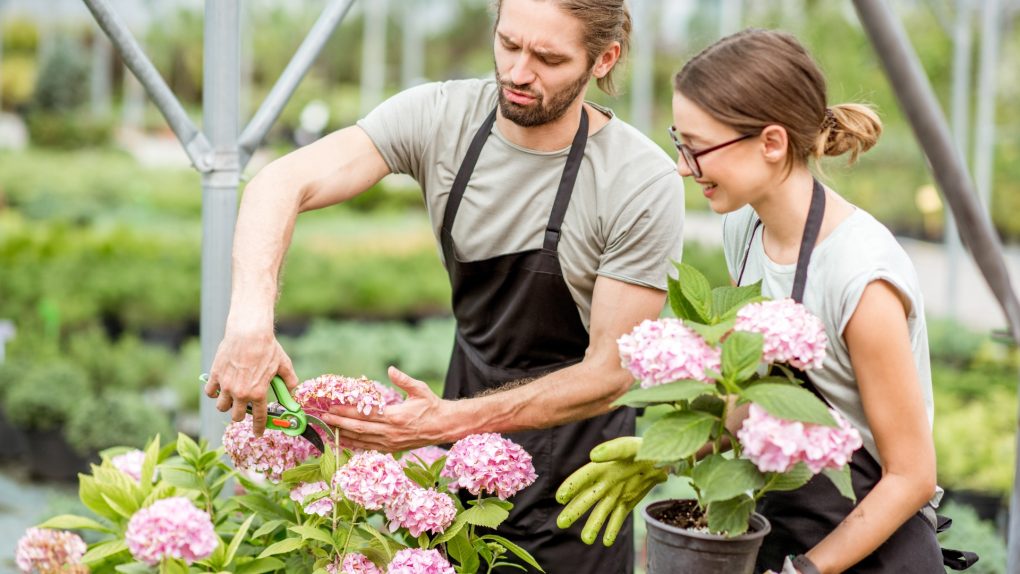Why Is My Hydrangea Drying Up? Common Causes and Solutions
Hydrangea could be drying up for various reasons, with insufficient water, excessive sunlight, and improper pruning being common causes. These plants prefer consistently moist soil and may wilt quickly if allowed to dry out. Remember to keep the soil evenly moist, but be careful not to over-water as doing so can lead to root rot.

Additionally, ensure that your hydrangea is located in a spot with partial shade, as excessive sunlight can cause stress or even burn the leaves. Over-pruning or pruning at an incorrect time can also lead to a struggling plant. Most hydrangea varieties should be pruned just after blooming, while “Hydrangea macrophylla” and “Hydrangea serrata” should be pruned before their new growth emerges in late winter or early spring.
Table of Contents
Environmental Factors
Hydrangeas are sensitive plants and can easily wilt and dry up due to various environmental factors. Here are some of the most common factors that can cause your hydrangea to dry up:
Watering
Hydrangeas need consistent moisture in the soil, but overwatering can also harm them. The soil should be moist but not waterlogged, and the plant should not sit in standing water. Therefore, watering the plant deeply and regularly is important, especially during hot and dry weather. A good rule of thumb is to water the plant when the top inch of soil feels dry.
Sunlight Exposure
Hydrangeas prefer partial shade or filtered sunlight, and too much direct sunlight can cause them to dry up. If your hydrangea is in a location with too much sun exposure, consider moving it to a shadier spot. Alternatively, you can provide shade by using a shade cloth or planting other plants nearby to provide some cover.

Temperature
Hydrangeas are sensitive to extreme temperatures, both hot and cold. High temperatures can cause the plant to dry up, especially if it is not getting enough water. On the other hand, frost and freezing temperatures can also damage the plant. If you live in an area with extreme temperatures, consider planting your hydrangea in a container that can be moved indoors during extreme weather conditions.
Pest and Disease Issues
Pests
Hydrangeas are susceptible to a variety of pests, including:
● Hydrangea scale
● Oystershell scale
● Aphids
These pests can cause damage to leaves and stems, and may cause the plant to weaken and become more susceptible to disease.
Diseases
Hydrangeas can also be prone to several diseases, including:
● Botrytis blight
● Powdery mildew
● Rust
These diseases can cause leaves to yellow and wilt, and may also affect the flowers. Fungal diseases like powdery mildew and rust can be exacerbated by high humidity and poor air circulation.

To prevent and control pests and diseases, good cultural practices should be maintained, such as:
● Watering at the base of the plant to avoid wetting the leaves
● Pruning to increase air circulation
● Removing and disposing of infected plant material
If chemical control is necessary, it should only be used as a last resort and in accordance with the manufacturer’s instructions.
Soil Issues
Hydrangeas require moist, well-draining soil to thrive. When the soil is too dry or wet, it can cause the plant to dry up or wilt. Here are some common soil issues that can cause hydrangeas to dry up:
Nutrient Deficiencies
Hydrangeas require a variety of nutrients to grow and bloom properly. If the soil lacks certain nutrients, it can cause the plant to dry up. Common nutrient deficiencies include:
● Nitrogen: A lack of nitrogen can cause yellowing of the leaves and stunting of the plant.
● Phosphorus: A lack of phosphorus can cause poor root development and a lack of blooms.
● Potassium: A lack of potassium can cause the leaves to curl and the plant to become more susceptible to disease.
Soil pH
The pH of the soil can also affect the health of hydrangeas. Hydrangeas grow in soils that are slightly acidic between pH 5.2 and 6.2. If the soil is too alkaline, it can cause the plant to have trouble absorbing certain nutrients, leading to drying up. If the soil has too much acidity, leaves can turn yellow and stunt growth. Therefore, it’s important to test the soil pH and adjust it if necessary.
Tips: It’s important to ensure that the soil is well-draining, moist, and has the necessary nutrients for hydrangeas to thrive. With proper soil care, hydrangeas can grow and bloom beautifully for years to come.
Pruning and Maintenance
Proper pruning and maintenance can help prevent hydrangeas from drying up. Here are some techniques for pruning and maintaining your hydrangea:
Pruning Techniques
Pruning is an essential part of hydrangea care. Here are some pruning techniques:
● Remove dead or damaged wood in the spring.
● Remove old flowers to encourage new growth.
● Prune back to the nearest set of healthy buds.
● Remove up to one-third of the plant’s growth each year to control size.

Fertilizing
Fertilizing your hydrangea can help it grow strong and healthy. Here are some tips for fertilizing:
● Use a slow-release fertilizer in early spring.
● Apply a balanced fertilizer with equal nitrogen, phosphorus, and potassium.
● Avoid fertilizing after August to prevent tender new growth from being damaged by frost.
Mulching
Mulching around your hydrangea can help retain moisture and prevent weeds. Here are some tips for mulching:
● Using organic mulch, such as bark chips or shredded leaves.
● Apply a 2-3 inch layer of mulch around the base of the plant.
● Avoid piling mulch against the base of the plant, as this can cause rot.
Hydrangea Care Schedule
Following a regular care schedule can help keep your hydrangea healthy. Here is a suggested care schedule:
| Month | Task |
| March | Remove dead or damaged wood. |
| April | Apply slow-release fertilizer. |
| May | Prune back to the nearest set of healthy buds. |
| June | Remove old flowers to encourage new growth. |
| July | Water regularly during hot, dry weather. |
| August | Avoid fertilizing to prevent tender new growth from being damaged by frost. |
| September | Apply a 2-3 inch layer of mulch around the base of the plant. |
